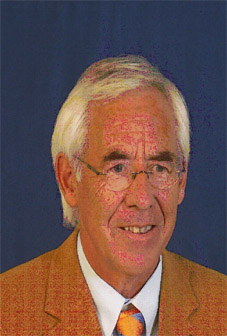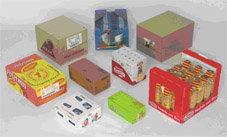 Manfred Bonetsm黮ler, the managing director up until mid-2007, now enjoys his retirement busying himself with his all-time favorite hobby: He works on advancing the packaging solutions used by Somic in an ad hoc department, including the new, innovative wrap-around-packer WA 414-W/2 first introduced at interpack last May. In principle, the WA 414-W/2 is based on the familiar wrap-around-packer WA 414-W/3, but it carries out the packaging process in two instead of the three stations of the previous model. This modification is what rendered the machine a full meter shorter than its sister model. Quite an impressive dimension, Bonetsm黮ler himself admits. "At present, the new machine should be the shortest wrap-around-packer in the market," he says. The reduced length was made possible through a clever trick: The hotmelt gluing process was simply integrated into the upstream standard packaging station with the station's portal now operating with three instead of two tools. Thus, the whole package forming process takes place in one station and in a single cycle.
Manfred Bonetsm黮ler, the managing director up until mid-2007, now enjoys his retirement busying himself with his all-time favorite hobby: He works on advancing the packaging solutions used by Somic in an ad hoc department, including the new, innovative wrap-around-packer WA 414-W/2 first introduced at interpack last May. In principle, the WA 414-W/2 is based on the familiar wrap-around-packer WA 414-W/3, but it carries out the packaging process in two instead of the three stations of the previous model. This modification is what rendered the machine a full meter shorter than its sister model. Quite an impressive dimension, Bonetsm黮ler himself admits. "At present, the new machine should be the shortest wrap-around-packer in the market," he says. The reduced length was made possible through a clever trick: The hotmelt gluing process was simply integrated into the upstream standard packaging station with the station's portal now operating with three instead of two tools. Thus, the whole package forming process takes place in one station and in a single cycle. 
Functional extension of the portal
While tool 1 collates the incoming products according to the pack pattern, the carton blank is taken from the magazine and positioned in station 2 by a vacuum conveyor. Tool 2 uses an actuator to place the collated products on the blank, which is folded up and around the product into an open-top wrap-around, while the product remains stabilized by the actuator. Tool 3 subsequently hotmelts the wrap-around before the package is outfed on the vacuum conveyor. Even though the speed is slightly reduced by performing an added step in the portal, the new standard machine can still produce up to 1,000 cartons per hour. In Bonetsm黮ler's experience, the users aren't interested in high performance alone. "In most cases, it is the combination of a series of good qualities plus an innovative idea that makes a top product," he explains. In this instance, that innovation was the implementation of the wrap-around process in the shortest length possible. Even in narrow production floors, it is possible to process different formats using an automatic end-of-line packaging system with this wrap-around technology.Fast format changes
The machine's flexibility is impressive. For one Somic customer it can package five different bottle sizes (100 to 1,500 ml) with short changeover times. The wraparound contains six of the largest bottles or 15 of the smallest bottles. The pushbutton format change is entered at the touch panel. Aside from bottles, the new W/2 machine can efficiently packages a variety of other products such as pouches, folding cartons and cans. And here, too, a wide range of primary package quantities and blank sizes can be automatically processed. For example, the product conveyor is moved into variable positions below the portal depending on the blank size. The tool exchange system is yet another innovative detail. "The 'quick-change' changeover represents a quantum leap compared to the W/3 model. The tool exchange tNIKE SB
The tool exchange system is yet another innovative detail. "The 'quick-change' changeover represents a quantum leap compared to the W/3 model. The tool exchange tNIKE SB













